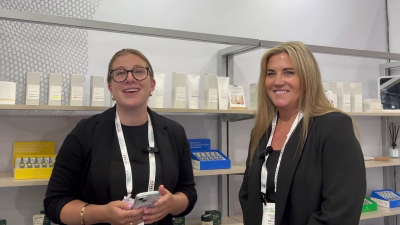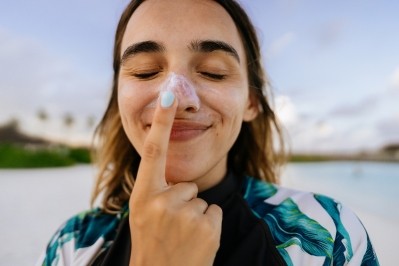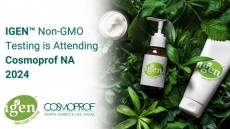US facial skin care market to grow 2.2% in 2024: hydration, anti-aging & multifunctionality drive demand

As reported by global market intelligence agency Mintel, the US facial skin care market is experiencing consistent growth, with retail sales projected to increase by 2.2% in 2024. This growth is driven by consumers’ heightened awareness and prioritization of skin care routines, particularly in the mass and masstige segments of the market.
According to Joan Li, a Senior Analyst in Beauty & Personal Care at Mintel, "mass and masstige facial skin care brands especially continue to show healthy launch activity and growth, increasing consumer awareness of and accessibility to innovative claims."
We spoke to Li for her insights into Mintel’s current US skin care market examination, including key consumer concerns, trends, and future market forecasting.
Hydration and anti-aging: The key consumer concerns
Consumers’ skin care priorities are increasingly specialized, with different age groups focusing on specific skin concerns. Li explained, "Hydration is the primary expectation of all skin care users,” and “beyond moisturization, younger users are focused on skin soothing and comfort claims, while more mature consumers gravitate toward slowing signs of aging."
The improving financial outlook has further influenced consumer behavior, and when “combined with the prioritization of personal skin care routines, has emboldened consumers to invest more in skin care products that are perceived to be of high quality," Li noted. This trend is evident in consumer willingness to pay more for trusted brand names, with over a third of facial skin care users considering premium purchases.
The evolving skin care routine: Multifunctionality takes center stage
As consumers become more knowledgeable about skin care, their routines have evolved to incorporate a broader range of products. Most consumers follow a daily three-to-four-step skin care regimen, typically including a cleanser, moisturizer, and lip balm.
However, the use of additional products, such as eye creams, anti-aging treatments, and serums, is also on the rise, “with nearly a quarter of consumers incorporating at least one of these additional steps in their morning and nighttime routines," said Li.
Consumers increasingly seek high-impact, multifunctional products that can streamline their regimen while delivering multiple benefits in response to the growing complexity of skin care routines. This trend is particularly strong among those looking to maximize value from their purchases.
Products in this segment include “a moisturizer with built-in SPF or a serum that also addresses pigmentation and hydration," Li explained. "Given that 39% of consumers reported being willing to pay more for a product that offered multiple benefits, brands should consider the per-benefit cost of a product as part of consumers' decision-making," she added.
Challenges & opportunities: Addressing unmet consumer needs
Despite the increasing sophistication of skin care routines, many consumers still need help finding products that meet their needs. "40% of consumers say they haven't found a product that works for them yet," Li highlighted, adding that "among this group that has yet to find its holy grail product, pain points often revolve around efficacy, time-intensive product research, and affordability."
These challenges present an opportunity for brands to develop more accurate research tools and educational content to help consumers understand the complexities of skin care products.
Additionally, the growing emphasis on efficacy and value has led consumers to scrutinize products more closely. This scrutiny is particularly evident among younger, more advanced skin care users, who are highly engaged and often look for products that align with their values and the recommendations of peers and influencers.
Li explained, "Users who self-report as being advanced skin care users tend to be younger in age and female, meaning that brands can expect more scrutiny from this engaged audience on the level of brand values, ingredients, and product recommendations.”
Market dynamics: Acne treatments & moisturizers on the rise
Looking ahead, acne treatments and facial moisturizers are expected to see significant growth through 2028, driven by various factors. "The projected growth of acne treatments can be attributed to attention towards adult acne among other skin conditions driven by stress, diet, and environmental factors," said Li.
The rising concern about adult acne, coupled with the increasing attention paid to skin care by teens and tweens, is expected to drive demand for acne treatments. "As teens and tweens pay greater attention to their skin care routines, healthy skin care goals are closely intertwined with acne prevention and acne care,” she illustrated.
Facial moisturizers, on the other hand, continue to be a staple in consumers’ daily routines, particularly as they incorporate multifunctional benefits. "Consumer focus on hydration and preventative skin care has made these products a staple in daily routines," Li noted. "As moisturizers incorporate multifunctional benefits, consumers perceive that these products can have greater impact beyond basic hydration, which in turn encourages higher spend,” she added.
L'Oréal USA’s success story: Strategic innovations & market share gains
One of the standout performers in the US facial skin care market is L'Oréal USA, which has significantly increased its market share, thanks in large part to the success of its mass and masstige brands. In particular, "CeraVe and La Roche-Posay performed particularly well for the company this past year in the facial cleansing, anti-aging treatment, and facial moisturizing categories,” said Li.
This success underscores the importance of balancing innovation with proven efficacy in a competitive market. "To stay competitive, brands must nimbly balance what's new with what's tried-and-true," Li advised. "As consumers are motivated by both novelty and efficacy, brands can update popular, efficacious formulas with skin health-forward ingredient narratives, personalization, and dermatology-driven claims,” she shared.
The premiumization puzzle: Value vs. cost
While premium skin care products continue to attract interest, they face increasing pressure from more affordable counterparts to prove their worth. Consumers are discerning about the value they receive from premium products, and while many are willing to spend more on products with multifunctional benefits and long-lasting results, most remain cautious about their spending.
"The fact that recent premium purchases and trade-up rates don't more closely match consumers' reported interest in paying more indicates that premium offerings continue to face pressure from more affordable counterparts to prove their value," Li explained.
This cautious approach to premiumization is also reflected in consumer behavior when it comes to switching products. "46% of consumers who switched out a product this past year said they did so because they wanted to try something new," Li noted.
This highlights the strong influence of novelty on purchase decisions, emphasizing the need for brands to continually innovate while reinforcing the value and quality of their existing products.
Innovation at the forefront: What’s next for facial skin care?
Innovation remains a key driver in the facial skin care market, with several exciting developments on the horizon. Among these are psychodermatology, biotech-infused skin care, and “the integration of AI and machine learning for personalized skin care solutions is also noteworthy, as it allows consumers to receive tailored product recommendations based on their unique skin profiles."
As the facial skin care market continues to evolve, the competitive landscape will also shift, with mass and masstige offerings exerting pressure on premium and indie brands. Li emphasized the importance of staying relevant to a diverse consumer base: "As the population in the US continues to age and become more ethnically diverse, stakeholders must ensure their offerings are relevant to multiple skin types and tones, at different life stages."
The US facial skin care market is poised for continued growth, driven by evolving consumer preferences, increasing demand for multifunctional products, and exciting innovations. As brands navigate this dynamic landscape, they must balance the need for innovation with the demand for proven efficacy while maintaining a strong connection with their consumers.

















